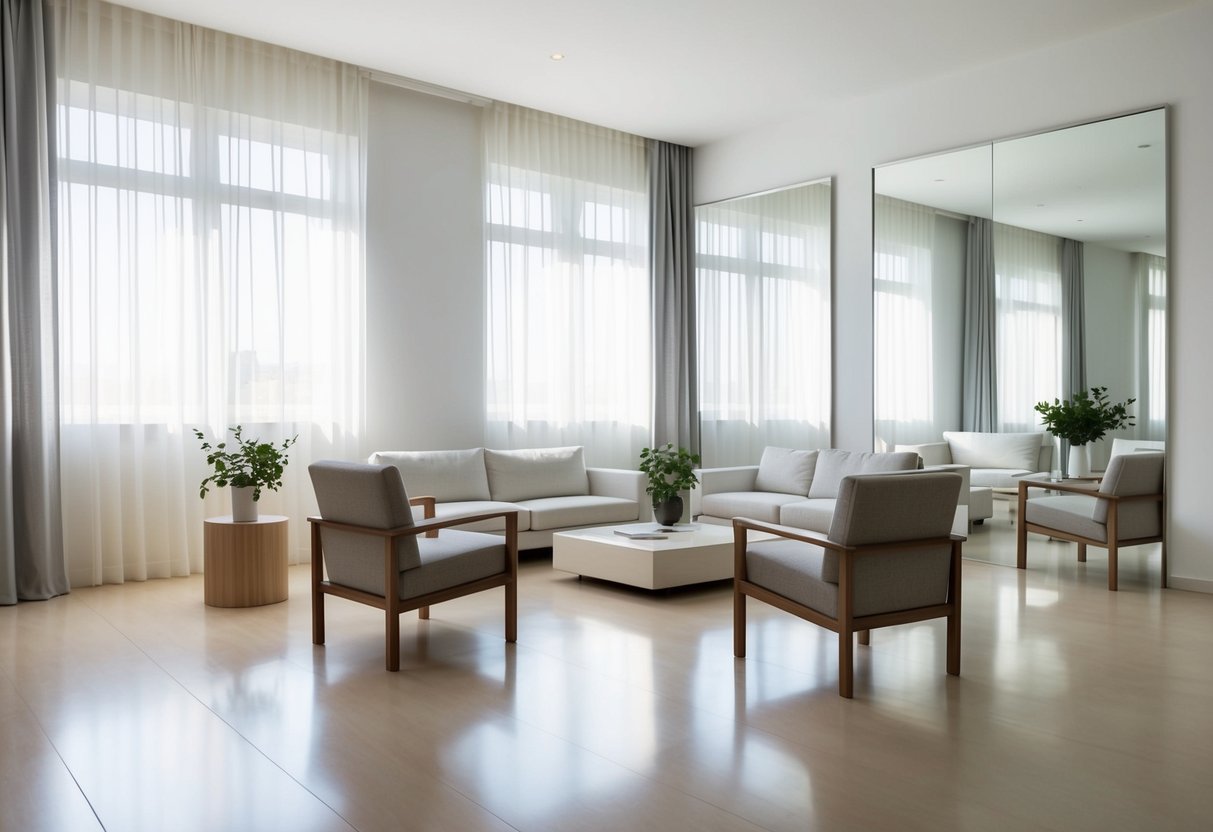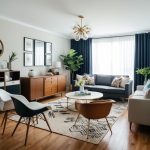Maximizing Natural Light: Clever Home Decor Strategies for a Brighter Space
Furniture and Layout for Light Optimization

Arranging furniture strategically and adopting an open floor plan can significantly enhance natural light in a home. Optimal furniture placement avoids blocking windows, while spacious designs allow light to flow more freely.
Functional Furniture Placement
Carefully consider the placement of large pieces of furniture. Avoid positioning couches or cabinets in front of windows, as this can obstruct natural light. Instead, place low-rise furniture near windows to allow light to spill over into the room.
Mirrors can be strategically positioned to reflect light from windows deeper into the room. Use see-through furniture like glass coffee tables and acrylic chairs to maintain a flow of light without visual obstruction. Avoid cluttering the space with excessive furniture, which can create shadows and dark spots.
Choosing furniture with lighter colors can also contribute to a brighter atmosphere. Dark colors tend to absorb light, while lighter shades reflect it. This principle not only applies to large pieces but also to smaller decor items like cushions and rugs.
Open Floor Plans and Spacious Design
Adopting an open floor plan helps maximize the distribution of natural light. By minimizing walls and partitions, light from windows can travel deeper into the living areas. This design approach also makes the space feel larger and more inviting.
In homes with multiple floors, consider open staircases which allow light to pass through to lower levels. To enhance light flow, choose minimalist designs with clean lines and fewer objects. This keeps the space less cluttered and allows for better light distribution.
Avoid heavy, dark window treatments. Instead, opt for sheer or light-colored curtains to allow as much light as possible to enter the room. This approach works well in both contemporary and traditional settings, maintaining a bright and airy environment.
Utilizing Color to Maximize Light
Choosing the right colors and finishes can significantly enhance the natural light in your home. Light colors, bright accents, and carefully selected textures can make a space feel airy and bright.
Light Colors and Bright Accents
Whites, pastels, and creams are fantastic choices for reflecting natural light. These colors can make a room appear larger and more inviting. White walls, for instance, work as a blank canvas, bouncing light around the space.
Adding bright accents, such as throw pillows or rugs, introduces warmth without overwhelming the eye. Pastel shades like mint green or pale blue can also make a room feel tranquil and open. Dark-colored fabrics, on the other hand, tend to absorb light and can make a space feel smaller.
Surface Textures and Finish Choices
The choice of surface textures and finishes can also influence how light interacts with a room. Glossy finishes on walls and furniture can reflect light, making the space appear brighter. However, balance is key, as too much gloss can create unwanted glare.
Matte finishes absorb less light and can add depth without darkening the room. For fabrics, lightweight materials like linen or cotton should be chosen over heavier, dark-colored fabrics. These choices enhance light reflection and contribute to a brighter, more pleasant atmosphere.
Selecting Proper Window Treatments
Choosing the right window treatments is essential to control natural light effectively and enhance the aesthetic appeal of a room. The right mix of materials and styles can make a difference in how bright and welcoming your home feels.
Curtains: Sheer vs. Heavy Drapes
Sheer curtains are a popular choice for maximizing natural light. Made from lightweight fabric, they allow sunlight to filter through while still providing a degree of privacy. Sheer curtains can evoke a sense of airy elegance, making them a good fit for living rooms, bedrooms, and dining areas. The neutral and light colors found in sheer fabrics subtly enhance a room’s natural light without overwhelming the decor.
On the other hand, heavy drapes are more suited for rooms where light control and insulation are priorities. They block out sunlight more effectively and can contribute to maintaining indoor temperatures. Thick fabrics, such as velvet and brocade, provide a luxurious feel that can be paired with layered treatments for versatile functionality. Heavy drapes are ideal for bedrooms where darkness is required for better sleep.



